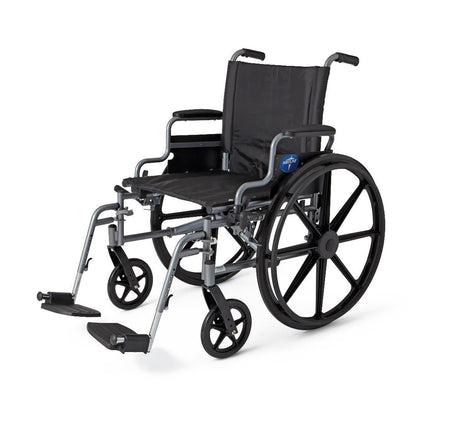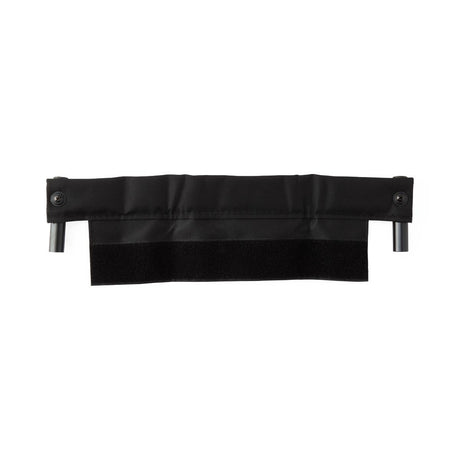Navigating the world of mobility aids can be overwhelming, especially when trying to find the right fit for your needs. One common question that often arises is whether a rollator walker can also serve as a wheelchair. This blog post aims to shed light on this important topic, exploring the uses, benefits, and limitations of rollator walkers and their potential to function as wheelchairs. For seniors seeking more independence and comfort, understanding these mobility aids is crucial.
What is a Rollator Walker?
A rollator walker is a type of mobility aid featuring wheels, a built-in seat, and hand brakes. Unlike traditional walkers, which need to be lifted with each step, rollators glide smoothly across surfaces, making them ideal for people with limited strength or endurance. These devices often come with added features such as baskets for storage, making them a convenient choice for daily activities.
Rollator walkers offer increased stability and support compared to standard walkers, thanks to their wheeled design. They are particularly beneficial for individuals who experience fatigue when walking long distances but still wish to maintain some level of mobility and independence.
Despite their advantages, it's essential to understand that rollators are primarily designed for walking assistance, not as a replacement for wheelchairs. This distinction becomes crucial when considering their use for different mobility needs.
Key Benefits of Rollator Walkers
Rollator walkers provide several benefits that make them a popular choice among seniors. Firstly, they offer enhanced mobility, allowing users to move around more freely without the need to lift the device. This can be particularly beneficial for those with arthritis or other conditions that affect hand strength and coordination.
Another significant benefit is the built-in seat. This feature allows users to take a break and rest whenever needed, which is especially helpful during long walks or when standing in line. The seat also provides a convenient place to sit while engaging in activities such as gardening or cooking.
Lastly, rollator walkers often come with added features like storage baskets, making it easy to carry personal items or groceries. This added convenience can significantly improve the quality of life for seniors, enabling them to maintain their independence and carry out daily tasks with ease.
Can a Rollator Walker Be Used as a Wheelchair?
The idea of using a rollator walker as a wheelchair may seem appealing for its dual functionality. However, it's crucial to understand that while some rollators are designed to function as transport chairs in certain situations, they are not a substitute for a full-time wheelchair.
Rollator walkers with a built-in seat and footrests can provide temporary seating for short distances. For example, if a user becomes fatigued while walking, they can sit on the rollator and have someone push them for a brief period. This dual functionality can be convenient in specific scenarios but has its limitations.
It's essential to consider factors such as the user's weight, the rollator's weight capacity, and the terrain. Rollators are not designed to handle rough surfaces or extended use as a wheelchair. Therefore, while they can offer temporary relief, they should not replace a dedicated wheelchair for those who require continuous seated mobility.
Understanding the Limitations
While rollator walkers offer several benefits, they also have limitations that must be considered. One primary limitation is their weight capacity. Most rollators are designed to support a certain amount of weight, typically ranging from 250 to 300 pounds. Exceeding this weight limit can compromise the device's stability and safety.
Another limitation is the terrain. Rollators are suitable for smooth, even surfaces but may struggle on uneven or rough terrain. This can limit their use in outdoor settings or on surfaces such as gravel or sand. For those who need a mobility aid that can handle a variety of terrains, a wheelchair may be a better option.
Additionally, while rollators can provide temporary seating, they lack the ergonomic design and support of a dedicated wheelchair. Extended use of a rollator as a wheelchair can lead to discomfort and potential injury, highlighting the importance of choosing the right mobility aid for your specific needs.
Choosing the Right Mobility Aid
Selecting the right mobility aid involves considering several factors, including your specific needs, physical condition, and lifestyle. Here are some key points to keep in mind when choosing between a rollator walker and a wheelchair:

Assess Your Mobility Needs
Determine the extent of your mobility limitations. If you can walk short distances but need occasional support, a rollator walker may be suitable. However, if you require continuous seated mobility, a wheelchair might be a better fit.
Consider the Terrain
Think about where you will be using the mobility aid. Rollators are excellent for indoor use and smooth surfaces but may not perform well on uneven terrain. If you need a device for outdoor use, consider a wheelchair designed for various terrains.
Evaluate Comfort and Support
Comfort is crucial when choosing a mobility aid. Rollators provide temporary seating but may lack the ergonomic support of a wheelchair. Consider how long you will be using the device and whether you need additional support for extended periods.
Factor in Weight Capacity
Ensure that the mobility aid you choose can support your weight. Exceeding the weight capacity of a rollator walker can compromise its stability and safety. Check the manufacturer's specifications and choose a device that meets your requirements.
Benefits of Using a Wheelchair
While rollator walkers offer several advantages, wheelchairs provide unique benefits that make them essential for many individuals. One significant benefit is the ability to travel longer distances without fatigue. Wheelchairs offer continuous seated mobility, allowing users to move around comfortably without the need for frequent breaks.
Wheelchairs also provide better support and comfort, thanks to their ergonomic design. Many wheelchairs come with adjustable features, such as reclining seats and footrests, that enhance comfort and reduce the risk of pressure sores and other complications.
Finally, wheelchairs are designed to handle various terrains, making them suitable for both indoor and outdoor use. This versatility allows users to participate in a wider range of activities and maintain their independence.
Combining Rollator Walkers and Wheelchairs
For some individuals, combining the use of a rollator walker and a wheelchair can offer the best of both worlds. For example, you might use a rollator walker for short trips around the house or quick errands, while relying on a wheelchair for longer outings or when you need to travel over uneven terrain.
This approach allows you to take advantage of the unique benefits of each mobility aid, ensuring that you have the right support for different situations. It's essential to work with a healthcare professional to determine the best combination of mobility aids for your specific needs.
Conclusion
Navigating the world of mobility aids can be challenging, but understanding the differences between rollator walkers and wheelchairs can help you make an informed decision. While rollator walkers offer increased mobility and convenience, they are not a replacement for a dedicated wheelchair.
By considering factors such as your mobility needs, the terrain, comfort, and weight capacity, you can choose the right mobility aid to enhance your quality of life. Whether you opt for a rollator walker, a wheelchair, or a combination of both, the goal is to maintain your independence and enjoy life to the fullest.
If you have any questions or need further assistance, don't hesitate to reach out to a healthcare professional who can guide you in selecting the best mobility aid for your needs.
FAQs
Can I use a rollator walker as a wheelchair?
While some rollator walkers can provide temporary seating, they are not designed for continuous use as a wheelchair. It's essential to consider factors such as weight capacity and terrain.
What are the benefits of using a rollator walker?
Rollator walkers offer increased mobility, built-in seating for breaks, and added features like storage baskets, making them convenient for daily activities.
How do I choose the right mobility aid?
Consider your specific mobility needs, the terrain you will be using the device on, comfort and support, and the weight capacity of the mobility aid. Consulting with a healthcare professional can also help you make an informed decision.
Can I combine the use of a rollator walker and a wheelchair?
Yes, combining the use of both mobility aids can offer the best of both worlds, providing support for different situations and enhancing your overall mobility and independence.
What should I consider when using a rollator walker?
Ensure that the rollator walker can support your weight, and use it on smooth, even surfaces to avoid stability issues. Remember that rollators are designed for walking assistance, not as a replacement for wheelchairs.







